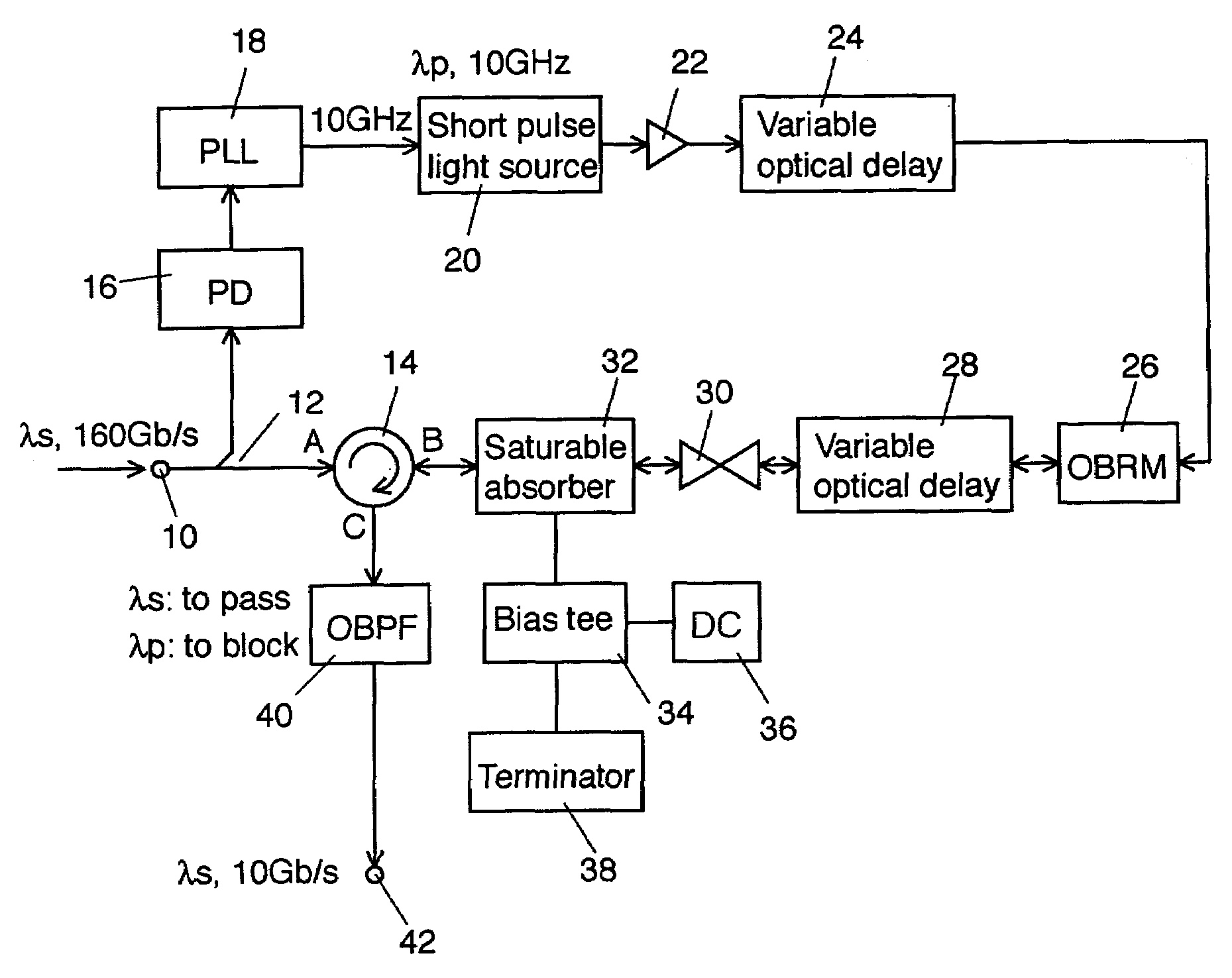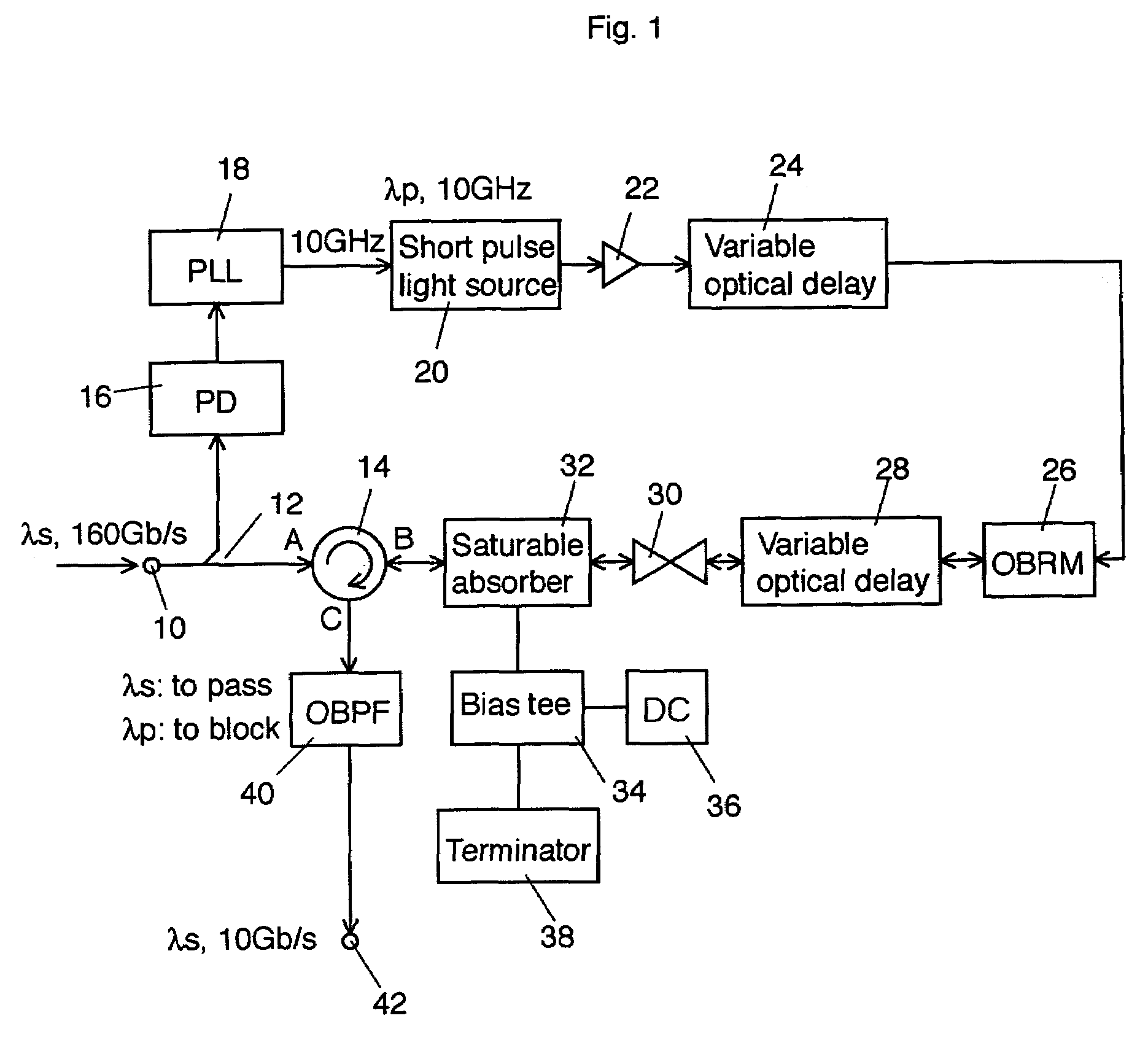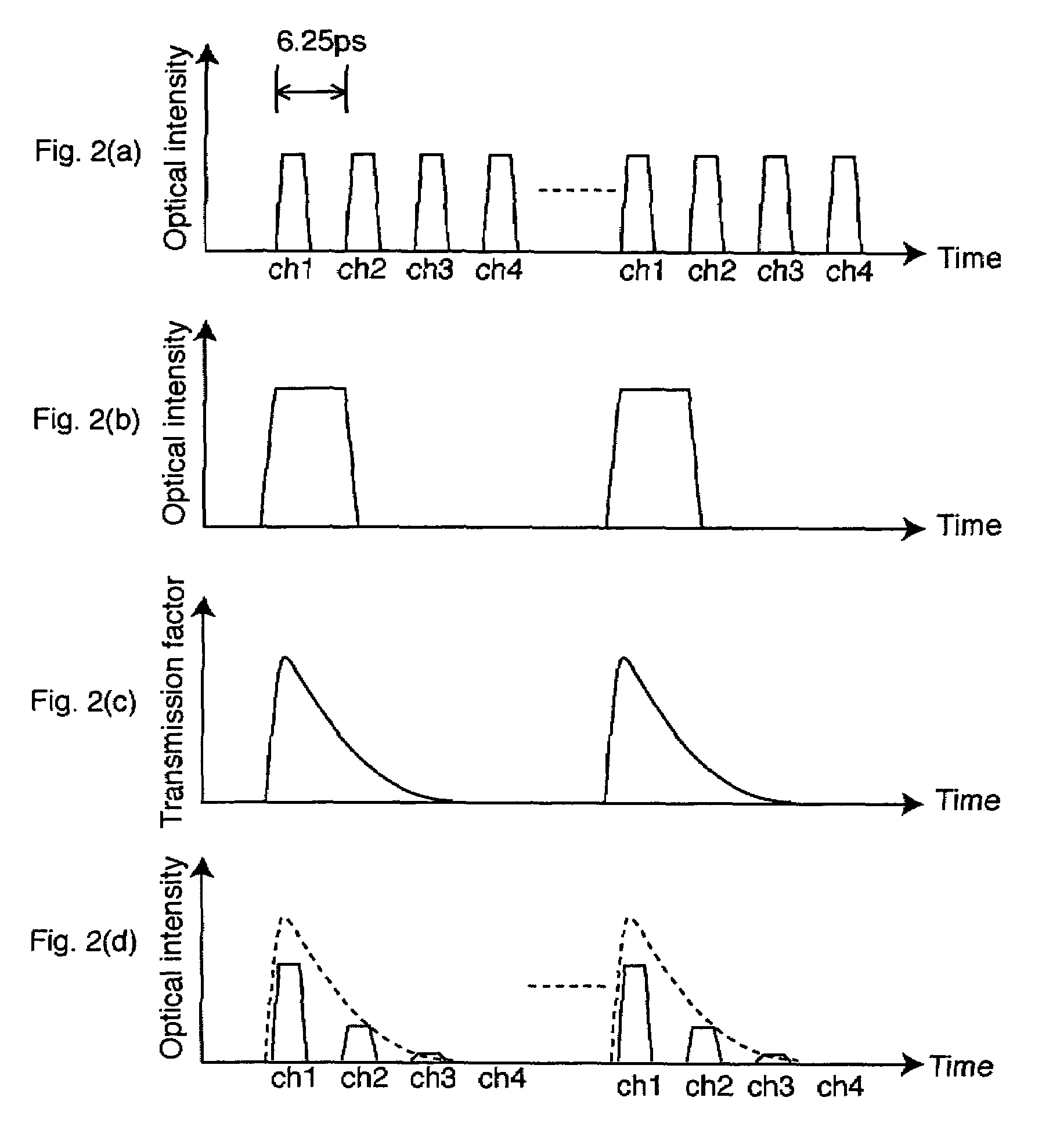Optical pulse demultiplexer and method thereof
a technology of optical pulse and multiplexer, which is applied in the field of optical pulse demultiplexer and method thereof, can solve the problems of difficult to adjust the polarization and phase into the optimum condition, and the inability to directly convert such an ultra high-speed optical pulse into an electric signal at the receiving terminal, so as to achieve improved pulse demultiplexing efficiency, and improved accuracy
- Summary
- Abstract
- Description
- Claims
- Application Information
AI Technical Summary
Benefits of technology
Problems solved by technology
Method used
Image
Examples
Embodiment Construction
[0024]Explanatory embodiments of the invention are explained below in detail with reference to the drawings.
[0025]FIG. 1 is a schematic block diagram of a first explanatory embodiment according to the invention.
[0026]An optical pulse signal light having a signal wavelength λs at 160 Gbps enters an input terminal 10. Here, the optical pulse signal light at 160 Gbps comprises a signal light wherein 16 pulse data lights, namely 16 channels, at a base rate 10 Gbps are time-division-multiplexed. Amplitude of a pulse signal light of one channel is set slightly narrower than amplitudes of pulse signal lights of the other 15 channels, and by this configuration, a tone component at 10 GHz is superimposed on an optical pulse signal light at 160 Gbps. A tone component at 10 GHz also can be superimposed by modulating optical phase of the signal light instead of the amplitude. The width of each optical pulse of the optical pulse signal light at 160 Gbps is set to approximately 3 to 4 ps.
[0027]An...
PUM
| Property | Measurement | Unit |
|---|---|---|
| frequency | aaaaa | aaaaa |
| signal wavelength | aaaaa | aaaaa |
| frequency | aaaaa | aaaaa |
Abstract
Description
Claims
Application Information
 Login to View More
Login to View More - R&D
- Intellectual Property
- Life Sciences
- Materials
- Tech Scout
- Unparalleled Data Quality
- Higher Quality Content
- 60% Fewer Hallucinations
Browse by: Latest US Patents, China's latest patents, Technical Efficacy Thesaurus, Application Domain, Technology Topic, Popular Technical Reports.
© 2025 PatSnap. All rights reserved.Legal|Privacy policy|Modern Slavery Act Transparency Statement|Sitemap|About US| Contact US: help@patsnap.com



